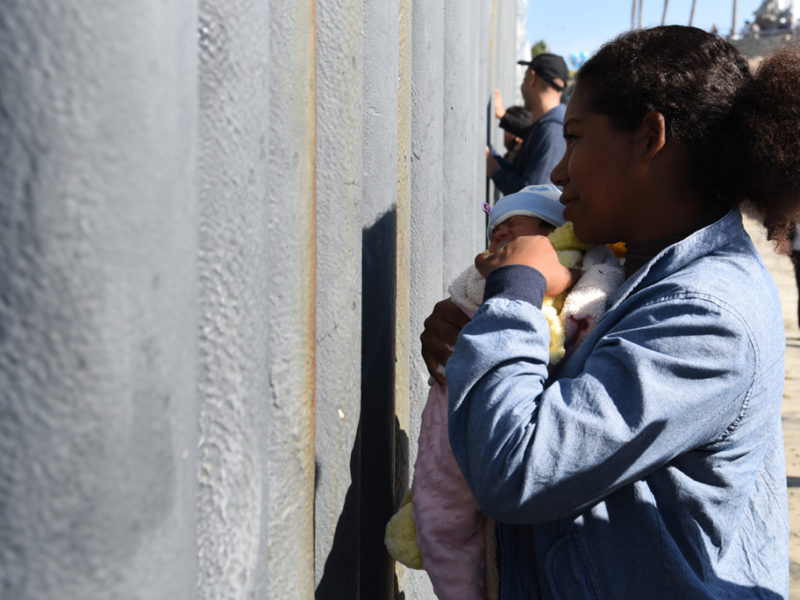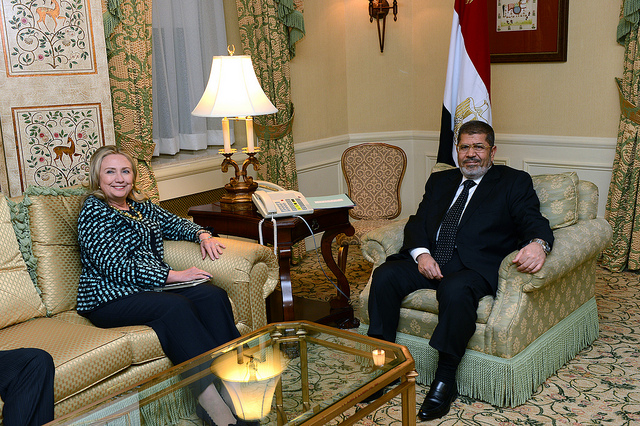By Alex Braithwaite, and guest contributors Faten Ghosn and Miranda Simon
June 20 is World Refugee Day. The world’s 26 million refugees are part of a larger population of almost 80 million migrants globally who have been forcibly displaced from their homes by conflict, persecution, or loss of livelihood.
In recent years, public discussion of the devastating conditions faced by these forced migrants has grown. Nonetheless, most wealthy countries continue to embrace the “grand compromise” strategy in which they funnel monetary assistance through UN agencies to encourage developing country governments to continue hosting refugees and other forced migrants locally, thus limiting their onward movement to more developed countries. These developed countries need to do much more to lead an international response.
With a change in leadership, will the US re-emerge as a global leader in welcoming refugees and other forced migrants? Almost six months into the new administration, the jury is still out. On the one hand, President Biden eventually announced an expansion in resettlement of refugees. On the other, Vice President Harris recently urged potential asylees from Central America and Mexico to stay home and not attempt the journey to the US border.
Though these actions present a confused message about the US commitment to forced migrants, there may be reason for optimism. Crucially, the new administration appears to understand the dynamics of decision-making among forced migrants. In April, Harris was asked how she would define success in reducing the number of migrants at the US-Mexico border. She took the opportunity to reflect on the drivers of forced migration:
“[T]hey don’t want to leave the place where they grew up; where they… speak the language, or they know the culture. The place where they’re from the place that is home,” Harris said. “Most people don’t want to leave home and when they do, it’s usually for one of two reasons: they’re fleeing some harm, or they cannot stay and satisfy the basic necessities of life such as feeding their children and having a roof over their head.”
Harris’s statement is subtle but important. It associates two “types” of migrants that are usually considered distinct: migrants leaving for economic reasons and migrants who have been exposed to violence. In doing so, it opens the door to the possibility they may have similar claims to assistance. It also emphasizes individuals’ reasons for staying home as a prelude to their reasons for leaving. Only 3.5 percent of the world’s population are migrants. The reasons people stay, and return, home deserve greater emphasis.
Does Harris’ statement apply to forced migrants from other countries and contexts? Our research suggests that it does. Take the example of Syrian refugees. In 2011, Syria became immersed in a bloody civil conflict that has displaced more than half of its population and killed nearly half a million people. In the summer of 2018, we conducted focus group discussions and a survey of 1,750 Syrian refugees in Lebanon. We asked about the context of their departure and their attitudes toward one day returning to Syria. While 45 percent of the refugees we interviewed identified having been directly or indirectly exposed to violence, almost all (approximately 93 percent) identified “economic reasons” as one of their primary motivations for leaving. Between 2011 and 2016, cumulative losses in gross domestic product (GDP) were estimated at $226 billion—four times Syria’s GDP in 2010. According to a 2018 Mercy Corps report, two-thirds of Syrian households lost one or more of their main sources of income and secure access to food after the conflict broke out. Even if not personally harmed by violence, individuals are still displaced from their homes by its destructive, and in many cases economic, effects.
Harris’s statement also resonates with our finding that refugees leave their homes reluctantly (i.e., forcibly). Considerable research shows why people form attachments to places that influence their sense of stability, security, and self-esteem. Even after a major event, individuals with strong place attachments are less willing to leave those places. When we interviewed refugees in Lebanon, the conflict had been ongoing for seven years. Even so, many refugees continued to communicate a strong attachment to their homes, and about 60 percent said they would like to return home in the future.
What does this mean for refugee and forced migration policy?
Forcing refugees to return to their homes is clearly dangerous. Denmark recently began revoking residency permits for Syrian refugees, “arguing that the Syrian capital, Damascus, and neighboring regions are safe.” This statement is contested by those arguing that Syria remains too dangerous for refugees to return. Moreover, it does not address refugees’ primary motivation for migrating; “their ability to feed their children and provide a roof over their heads.”
Many refugees want to return and maintain strong attachments to their home. But they would return to an economic situation that is far worse than the one they left. Syria now faces an acute economic crisis: the Syrian pound has collapsed; before COVID-19, 83 percent of Syrians were already below the poverty line. Even if safety is re-established, returning refugees will be exposed to other forms of harm.
More broadly—and visibly for the United States—the fact that economic well being and safety are inextricably linked motivators for leaving home suggests that migrants arriving at the US’s southern border should be understood as having been forcibly displaced from their homes.
Taking Harris’ broad definition of migration means that most individuals who reach the US’s southern border are indeed forced migrants whose situation should be treated as a humanitarian issue rather than a matter of border security. Such an approach would require the US to revoke the arcane and ill-considered Title 42 policy, reversing the Trump administration’s de facto ban on asylum to the US. Such a reversal would clarify the Biden administration’s commitment to supporting vulnerable forced migrants. What better way to recognize World Refugee Day?
Alex Braithwaite is Professor and Associate Director in the School of Government & Public Policy at the University of Arizona. Faten Ghosn is University Distinguished Professor in the School of Government & Public Policy at the University of Arizona. Miranda Simon is Assistant Professor in the Department of Government at the University of Essex. The field research in Lebanon discussed here was sponsored by the Army Research Office and was accomplished under Grant Number W911NF-17-1-0030. The views and conclusions are those of the authors and should not be interpreted as representing the official policies, either expressed or implied, of the Army Research Office or the U.S. Government.







